
Gulls, or colloquially seagulls, are seabirds of the family Laridae in the suborder Lari. They are most closely related to the terns and skimmers and distantly related to auks, and even more distantly to waders. Until the 21st century, most gulls were placed in the genus Larus, but that arrangement is now considered polyphyletic, leading to the resurrection of several genera. An older name for gulls is mews, which is cognate with German Möwe, Danish måge, Swedish mås, Dutch meeuw, Norwegian måke/måse, and French mouette, and can still be found in certain regional dialects.

The great black-backed gull is the largest member of the gull family. Described by the Cornell Lab of Ornithology as "the king of the Atlantic waterfront", it is a very aggressive hunter, pirate, and scavenger. It breeds on the European and North American coasts and islands of the North Atlantic and is fairly sedentary, though some move farther south or inland to large lakes and reservoirs. The adult great black-backed gull has a white head, neck and underparts, dark grey wings and back, pink legs and yellow bill.
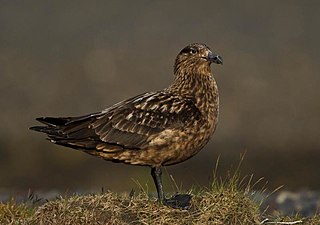
The great skua, sometimes known by the name bonxie in Britain, is a large seabird in the skua family Stercorariidae. It is roughly the size of a herring gull. It mainly eats fish caught at the sea surface or taken from other birds.
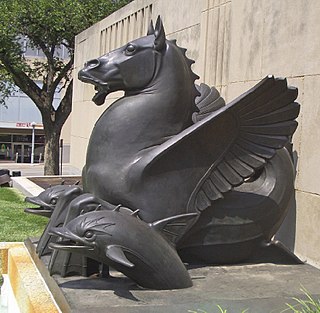
The hippocampus or hippocamp, also hippokampos, often called a sea-horse in English, is a mythological creature shared by Phoenician, Etruscan, Pictish, Roman and Greek mythology, though its name has a Greek origin. The hippocampus has typically been depicted as having the upper body of a horse with the lower body of a fish.
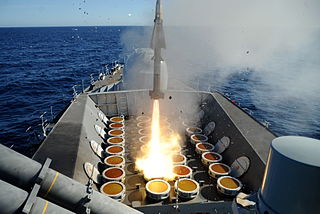
Sea Wolf is a naval surface-to-air missile system designed and built by BAC, later to become British Aerospace (BAe) Dynamics, and now MBDA. It is an automated point-defence weapon system designed as a short-range defence against both sea-skimming and high angle anti-ship missiles and aircraft. The Royal Navy has fielded two versions, the GWS-25 Conventionally Launched Sea Wolf (CLSW) and the GWS-26 Vertically Launched Sea Wolf (VLSW) forms. In Royal Navy service Sea Wolf is being replaced by Sea Ceptor.
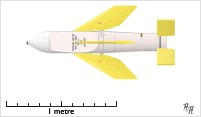
Seacat was a British short-range surface-to-air missile system intended to replace the ubiquitous Bofors 40 mm gun aboard warships of all sizes. It was the world's first operational shipboard point-defence missile system, and was designed so that the Bofors guns could be replaced with minimum modification to the recipient vessel and (originally) using existing fire-control systems. A mobile land-based version of the system was known as Tigercat.

The Lun-class ekranoplan is the only ground effect vehicle (GEV) to ever be operationally deployed as a warship, deploying in the Caspian Flotilla. It was designed by Rostislav Alexeyev in 1975 and used by the Soviet and later Russian navies from 1987 until sometime in the late 1990s.
Hellcat or The Hell Cat may refer to:
Hoverspeed was a ferry company that operated on the English Channel from 1981 until 2005. It was formed in 1981 by the merger of Seaspeed and Hoverlloyd. Its last owners were Sea Containers; the company ran a small fleet of two high-speed SeaCat catamaran ferries in its final year.

The Malkara was one of the earliest guided anti-tank missiles (ATGMs). It was jointly developed by Australia and the United Kingdom between 1951 and 1954, and was in service from 1958 until gradually replaced by the Vickers Vigilant missile in the late 1960s. It was intended to be light enough to deploy with airborne forces, yet powerful enough to knock out any tank then in service. The basic form was later adapted for the short-range surface-to-air role as the Seacat and influenced the development of the Ikara.

The Sea Skua is a British lightweight short-range air-to-surface missile (ASM) designed for use from helicopters against ships. It was primarily used by the Royal Navy on the Westland Lynx. Although the missile is intended for helicopter use, Kuwait employs it in a shore battery and on their Umm Al Maradem fast attack craft.
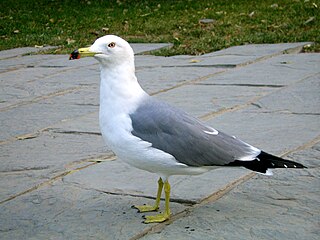
The black-tailed gull is a gull native to shorelines of East Asia.

The swallow-tailed gull is an equatorial seabird in the gull family, Laridae. It is the only species in the genus Creagrus, which derives from the Latin Creagra and the Greek kreourgos which means butcher, also from kreas, meat; according to Jobling it would mean "hook for meat" referring to the hooked bill of this species. It was first described by French naturalist and surgeon Adolphe-Simon Neboux in 1846. Its scientific name is originally derived from the Greek word for gull, "Glaros" and via Latin Larus, "gull" and furca "two-tined fork". It spends most of its life flying and hunting over the open ocean. The main breeding location is in the Galápagos Islands, particularly the rocky shores and cliffs of Hood, Tower and Wolf Islands, with lower numbers on most of the other islands. It is more common on the eastern islands where the water is warmer.
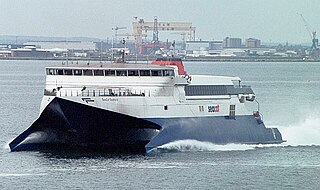
SeaCat was the marketing name used by Sea Containers Ferries Scotland for its services between Northern Ireland, Scotland and England between 1992 and 2004. The company was originally based in Stranraer later moving to Belfast. The name originates from the use of high-speed catamaran ferries.

Umineko When They Cry is a Japanese dōjin soft visual novel series produced by 07th Expansion. Its first episode debuted at Comiket 72 for Windows in August 2007. The story focuses on a group of eighteen people on a secluded island for a period of two days, and the mysterious murders that befall them. Readers are challenged to discern whether the murders were committed by a human or some other, supernatural source, as well as the method and motive behind them. The eight main Umineko games are split into two sets of four, which are considered the third and fourth titles in the When They Cry series, preceded by the two sets of Higurashi When They Cry games and followed by Ciconia When They Cry.

The American herring gull or Smithsonian gull is a large gull that breeds in North America, where it is treated by the American Ornithological Society as a subspecies of herring gull.

Kabushima Shrine, located in Hachinohe, Aomori, is a Shinto shrine in Japan. It was first built in 1269 on top of the Kabushima island by fishermen to pray for safety and good harvest at sea. The shrine has been rebuilt several times throughout its history. It was burnt down in November 2015 and rebuilt in 2020.

HNLMS Van Galen (F803) was a frigate of the Van Speijk class. The ship was in service with the Royal Netherlands Navy from 1967 to 1987. The ship's radio call sign was "PAVB". She was sold to the Indonesian Navy where the ship was renamed KRI Yos Sudarso (353).















